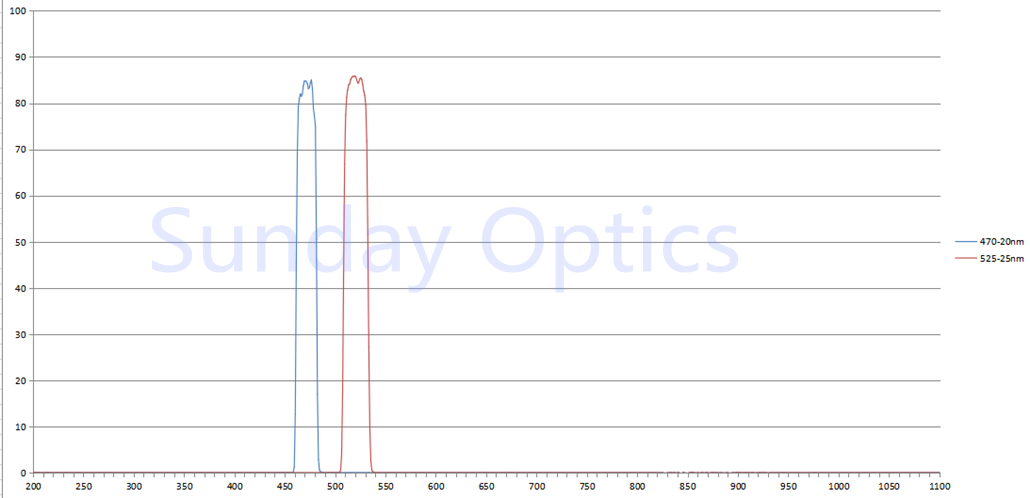Fluorescence Filters refer to a variety of Filters applied to a Fluorescence system, including the extraction of fluorescent energy or the acquisition of fluorescent images.Its main characteristics are good isolation degree of interference light and less spontaneous fluorescence interference.Fluorescent filters are used in various medical analysis and testing instruments, such as PCR, fluorescence immunoanalyzer, fluorescence microscope and so on.The cut-off depth of the fluorescent filter is usually required to be above OD5 (optical density, OD=-lgT).
Product Details
Fluorescence Filter
Fluorescence Filters refer to a variety of Filters applied to a Fluorescence system, including the extraction of fluorescent energy or the acquisition of fluorescent images.Its main characteristics are good isolation degree of interference light and less spontaneous fluorescence interference.Fluorescent filters are used in various medical analysis and testing instruments, such as PCR, fluorescence immunoanalyzer, fluorescence microscope and so on.The cut-off depth of the fluorescent filter is usually required to be above OD5 (optical density, OD=-lgT).
Fluorescent filter is a key component of biomedical and life science instruments.The typical characteristics of fluorescent filters are deep cutoff depth, small spontaneous fluorescence, and good transmittance surface shape, which is beneficial to the extraction of fluorescence imaging.Therefore, the better fluorescent filter use a single piece of colorless transparent glass as the base, coating the two surfaces of the glass.Compared with conventional fluorescent filters with multi-film gluing or color-glass assisted cutoff, single-chip fluorescent filters have obvious advantagesin fluorescence imaging. However, the single-chip fluorescent filters have high cost due to the high difficulty in production.
Fluorescent filter generally consists of three combinations, namely excitation filter, emission filter and dichromatic mirror.Some systems do not have dichromatic mirrors, because of the optical path structure.Other systems use lasers for excitation, without the need for excitation filters.
Excitation Filter:In the fluorescence microscope, only the Excitation wavelength is passable.In the past, short-wave pass filters were used, but now band pass filters are basically used.The shell is engraved with arrows indicating the recommended direction of light travel.
Emitting Filter : Selects and transmits the fluorescence emitted by the sample, and the light in other ranges is cut off.The wavelength of the emitted light is longer than that of the excited light (closer to the red).The band pass filter or long wave pass filter can be selected as the emission filter.The shell is engraved with arrows indicating the recommended direction of light travel.
Dichroic Mirror (Dichroic Beamsplitter,Dichromatic Beamsplitter) : Also known as Dichroic filter or color separator.Place at an Angle of 45° to the light path of the microscope.This filter reflects light of one color (excitation light) and transmits light of another color (emission light), which has a reflectivity greater than 90% and a transmittance greater than 90%.The impenetrable part of the spectrum is reflected rather than absorbed.The color of filter in transmitted light and reflected light complement each other, so it is also called dichromatic filter
T>90%
Blocking:OD6 200-1200nm
Flatness:1/4 lambda@633nm
Sample for Ex and Em
1. Ex470/30-Em515/30 FAM
2. Ex530/20-Em560/20 HEX
3 .Ex580/30-Em620/30 ROX
4. Ex630/20-Em660/20 CY5
5. Ex690/20-Em730/20 CY5.5
Sample Curve
Note: For more curves,please contact us.

Copyright © Changchun Sunday Optics Co., Ltd. All Rights Reserved | Sitemap